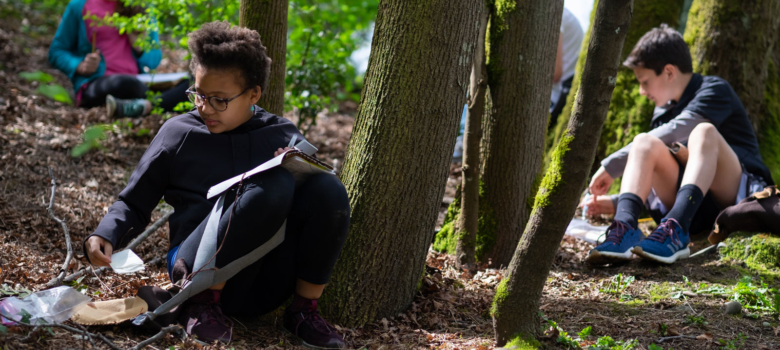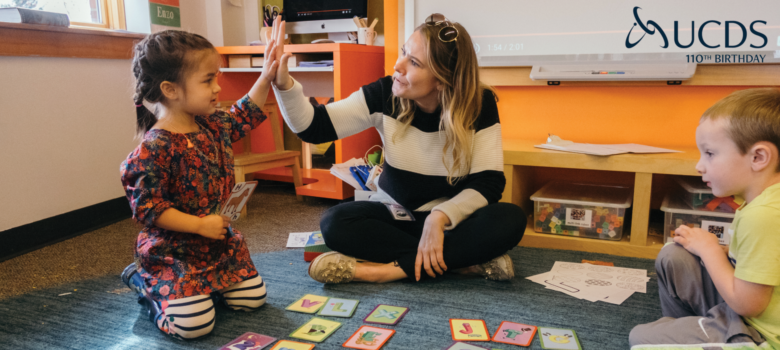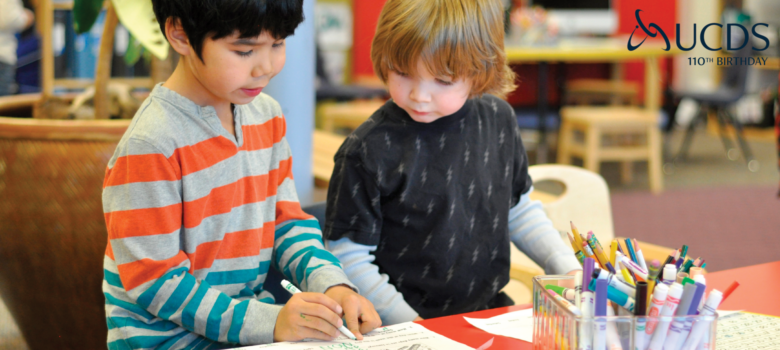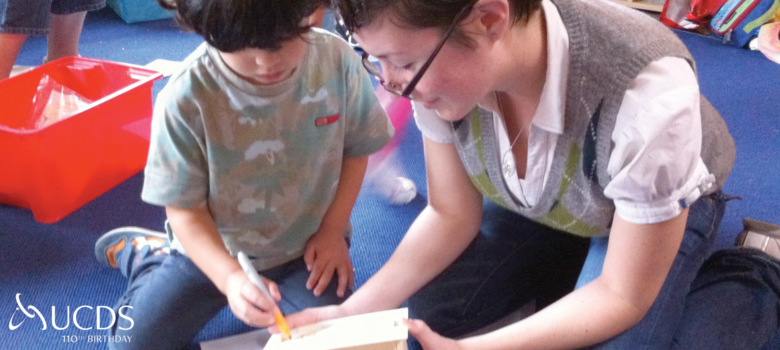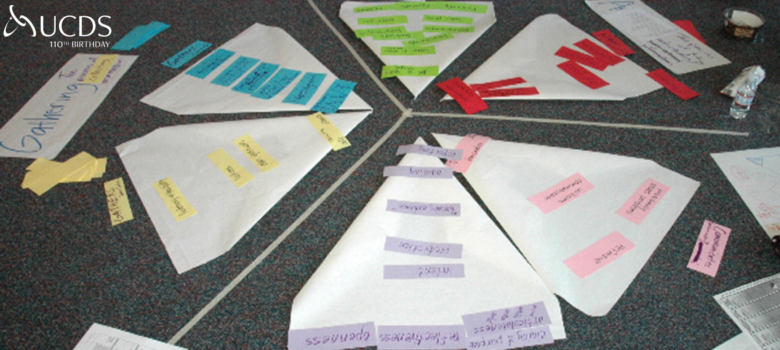By Abby Sandberg PhD, Learning Specialist and Early Elementary Division Head
The Power of Nature from The SharingPYP Blog
At UCDS, we believe that it is important to support learning opportunities both inside and outside of the classroom. Our youngest students get at least a full hour outdoors on the playground every day. We’re fortunate in Seattle to have several lush evergreens and mountain views to accentuate the visual landscape, even within city limits. Plus, the mild climate allows our students to experience the outdoors year round (even if a bit rainy and soggy at times!) Even though Seattle boasts an impressive amount of nature, it is still challenging to design outdoor school spaces that give children a respite from the city around them. Behind the carefully planned bamboo walls, the sounds of traffic and sirens can often prevail.
Because of this, we look for additional opportunities to get kids into spaces where nature can be appreciated more fully. Our elementary students go on overnight trips to the Olympic Peninsula every year (yes, even our first-graders!) where they are invited to take in the sights, sounds, smells, and feels of the natural world around them. Car horns are replaced by gurgling streams, and our playground basketball court (although much beloved) is replaced by soft moss under their shoes. Students who may struggle at the academic table often become alive while building dams with driftwood and troubleshooting their designs. Getting out of their usual social routines sparks new connections and collaborations with peers they may not have noticed before.
Although we relish our time in these spaces, distant from our campus, we also regularly seek out opportunities a little closer to home. Many city parks have greenspaces that help you feel removed from urban life. Sometimes as long-time residents, we have to refamiliarize ourselves with how much is so close to our doors! Simply walking down the street to the small neighborhood park allows students to reap the benefits of nature. Noticing how the trees change during fall, quietly watching a squirrel busy with its work, or looking for patterns in how a spider has woven a web are all opportunities that are easily found in most neighborhood parks. The observations students make during these outings spark additional conversations in the classroom. A science lesson based on students’ meaningful inquiries make lasting impressions on young minds. They begin to see that opportunities to learn are all around them and not just within the four walls of a school building.
10 Common Flexible Seating Myths from Edutopia
Spend any amount of time in a UCDS classroom, and you will recognize that we do not have the traditional school set up. There are no rows of desks housing quietly working students. Instead, you’ll see students in a variety of seating arrangements, or perhaps not sitting at all! During Math Vitamin, one student may be standing at the windowsill counting out the manipulatives they need for problem solving. A small group of kids may be sprawled out on the rug arranging their manipulatives in an array to practice partial product multiplication. Others are sitting at a table, busy documenting their designs. Upon a closer look, you’ll see that some are perched on stools, others are in rocking chairs, and some opt for the traditional four-legged chair.
John S. Thomas’s article in Edutopia debunks many of the myths associated with granting students the permission to work and learn in body positions that go beyond sitting at a traditional desk and chair. At UCDS, flexible seating choices align with our educational approach of an individualized educational experience for all students. We acknowledge that just like adults, children have personal preferences and styles that will facilitate their best focus and learning. While we do understand there are situations where children must learn to sit still and work quietly, we also acknowledge there are many other instances where that lesson may not be the most important goal. For example, by honoring a student’s work style of standing and moving while they build for Math Vitamin, they are probably much more likely to maintain focus, stay engaged, and make deeper discoveries. If they were restricted to a traditional desk and chair, they might spend so much energy forcing their body to remain still, that they lose steam for the actual learning.
Supporting a variety of seating options also empowers students to take ownership over their educational experience. Teachers help students reflect on seating choices that help them do their best learning, and those that aren’t so beneficial. These conversations allow students to notice what strategies work best for them and begin advocating for their needs. This important process not only sets them up for success on their next Math Vitamin, but provides a foundation for all future educational endeavors.

